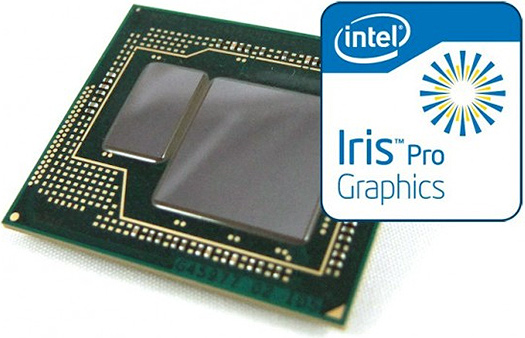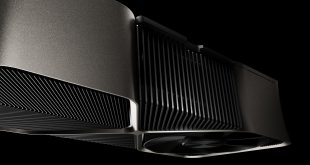Intel Corp. has been consistently improving performance of its integrated graphics cores for several years now and the code-named Skylake family of microprocessors will not be an exception. According to an unofficial media report, the Skylake will bring a rather dramatic improvement in terms of graphics processing performance compared to the code-named Broadwell family of chips.
As reported previously, the Broadwell breed of central processing units (CPUs) will boost the maximum amount of execution units (EUs) within the most powerful version of their integrated graphics processors (IGPs) to 48 units, a 20 per cent increase compared to the best IGP inside the Haswell CPUs. Apparently, the Skylake processors will improve performance of the integrated GPUs even more significantly. According to a report from CPU World, the best IGP inside the Skylake (the GPU is currently known under the GT4 moniker, but its commercial name will likely be the Iris Pro) will feature 72 execution units, 50 per cent more than the amount of graphics processing EUs inside the predecessor.
In a bid to make the Skylake family even more competitive when it comes to multimedia, Intel reportedly once again plans to redesign its video decoding/encoding engines to support the HEVC/H.265 codec and potentially even the VP9 codec in a order to provide hardware-accelerated playback of ultra-high-definition video. The company is also projected to further improve quality of media playback by adding new filters.
When it comes to other capabilities, the Skylake’s integrated GPU should be generally similar to its predecessors. The graphics core will support the DirectX 11.2, the OpenGL 5.0 and the OpenCL 2.1 application programming interfaces, but there is nothing said about the next-gen DirectX 12.0-class of capabilities. The GPU will support 4096*2304 at 60Hz resolution with 24-bits per pixel over DisplayPort/eDP interfaces as well as 4096*2160 at 60Hz resolution over HDMI.
Thanks to higher performance graphics processing engine, Intel will be able to further boost sales of its higher-end microprocessors to those who want better graphics, but do not want to pay for discrete graphics cards. End users will likely be able to enjoy better-looking video games even on systems with integrated graphics processors. What is unclear is whether Intel’s Skylake will use integrated GPUs for highly-parallel workloads, like AMD’s Kaveri accelerated processing units do.
Intel did not comment on the news-story.
Discuss on our Facebook page, HERE.
KitGuru Says: It is clearly nice that Intel continues to improve performance of its integrated graphics processors. What remains to be seen is whether the new IGP will also support new features.
 KitGuru KitGuru.net – Tech News | Hardware News | Hardware Reviews | IOS | Mobile | Gaming | Graphics Cards
KitGuru KitGuru.net – Tech News | Hardware News | Hardware Reviews | IOS | Mobile | Gaming | Graphics Cards




“What is unclear is whether Intel’s Skylake will use integrated GPUs for highly-parallel workloads, like AMD’s Kaveri accelerated processing units do.”
Not likely as Intel will need to modify the embedded RAM controller extensively and also modify the gpu management core to handle state management. It is a very complex endeavour when I doubt can be done in a short time. They might “short-cut” an implementation that is varsely inferior in implementation to AMD’s HSA hUMA implementation to emulate some HSA type operation to the gpu. In effect accelerating some more OpenCL functions, then may or may not claim HSA implementation. Intel do support OpenCL, so in some ways they can implement very differently to AMD’s HSA.
I still think Intel needs to make a more efficient implementation of their EU cores as their gpu runs at 1100Mhz as opposed to 800Mhz in the AMD APUs. Another issue of power drain is the eDRAM cache. While great for gpu and non-gpu transactions, it is drawing a lot of power.
Any word on the eDRAM on that 72EU (that’s 576 shaders in AMD/Nvidia speak, each EU is 8 of what they’d define as shaders)? Still 128MB? Is the bandwidth increased at all? I think the size is probably fine, but the bandwidth should be higher to feed that beast. I already feel like it should have been higher even for my Iris Pro 5200.